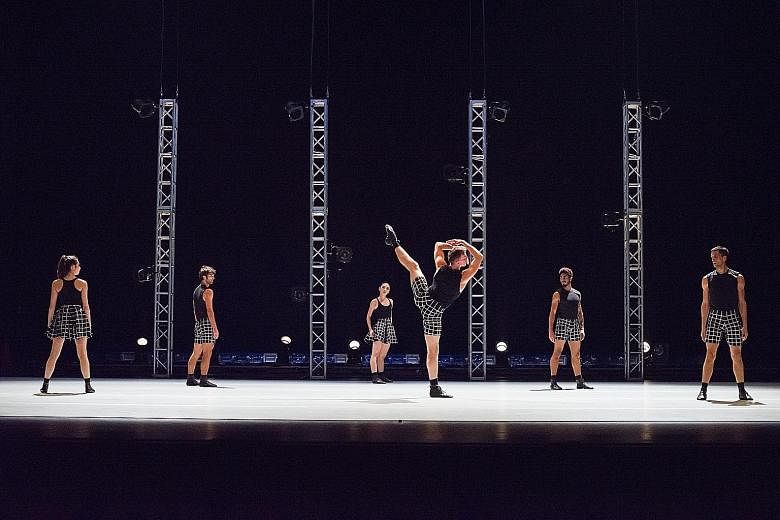REVIEW / DANCE DA:NS FESTIVAL/L.A. DANCE PROJECT
Esplanade Theatre
Wednesday
High on contemporary resonance, L.A. Dance Project celebrates diversity and cross-disciplinary creativity synergised with a vision of accessibility and respect for the legacy of great choreographers.
In this programme, choreography by the legendary Martha Graham brashly appeared alongside company artistic director Benjamin Millepied's creations that were inspired by neo-classical choreographer George Balanchine.
This offered a rare opportunity to review the syntax of Graham in three duets dating from 1952. The lyricism of classical ballet was replaced with parallel poses that look like Egyptian hieroglyphics, spines contracting and releasing with thoracic emotion in bold, hard-edged movement.
Graham's choreographic sensibility looked static in the context of today's free-flowing eclectic mix of dance; yet these duets illuminated past journeys and paid homage to creations that are of their time.
Closer, a duet by Millepied, was a stark counter-point. Crashing into the 20th century with a voluptuous sensuality, two bodies moved through a liquid lens of exploration. As the colours of the backdrop changed metaphorically, echoing seasons of love, the dancers found meeting points and divergence propelling them into personal rhythms that ultimately defied submission to the gutsy waves of Philip Glass' music.
Beautifully danced with articulate poise and intensity, it was a nuanced conversation revelling in small details that revealed intimate moments of a larger narrative.
New York City Ballet resident choreographer and soloist Justin Peck embraced the collaborative ethos of L.A. Dance Project in Murder Ballades through uniting scenic artist Stirling Ruby and composer Dessner.
Thematically probing American ballads and folk songs from the 1930s and 1940s, these potentially dark and sinister undertones were fused with bright emotional colours.
Peck found humour in the shadows and virtuosity in complex phrases of innovative, quirky moves edging towards the Hoedown style of an American musical. The constant blackouts between short scenes became distracting, curbing the flow and fun of this witty choreography.
Blackouts were essential in the final piece in a nod to the wizardry of lighting designers and back-stage crews. Associated with a diamond cut that maximises light, Millepied's Hearts And Arrows is an excerpt from a larger choreography, Gems, that reimagines Balanchine's 1967 Jewels.
The nattily attired dancers made angular lines with their arms denoting the facets of diamonds, ran backwards, falling and sustaining their movements that were interspersed with flowing lifts and changes of weight and patterning.
The superb choreographic drafting saw them dissect, reframe and deconstruct dance phrases underpinned by Glass' String Quartet No. 3 (Mishima).
The theatre became a moving partner as backdrops and side-hangings flew up, and lighting towers and spotlights constantly changed the mood and reconfigured the performance space in different ways.
Timing was essential for both on-and offstage artists in this cacophony of visual treats that merged and escalated to potent energy and emotional exultancy synonymous with hope, freedom and joy.

